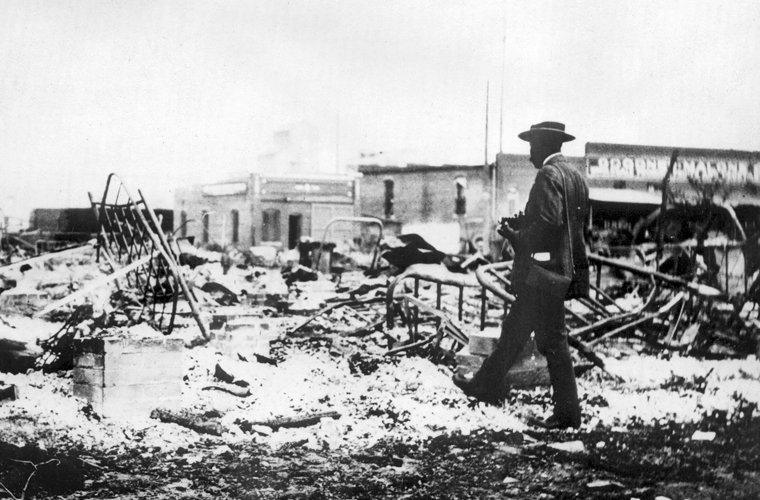The year 1921 marked a dark and devastating period in American history, as the city of Tulsa, Oklahoma, became the site of one of the deadliest race riots in the nation’s history. The events that unfolded on June 1st of that year left a lasting impact on the African American community and the city as a whole. The tragic story of the Tulsa race riots, also known as the Greenwood Massacre, is a stark reminder of the racial tensions and violence that plagued the United States during the early 20th century.
Tulsa, Oklahoma, at the time, was a city experiencing significant growth and prosperity, driven largely by the oil boom that had attracted thousands of people to the area. African Americans, seeking refuge from the racial tensions in the southern states and hoping to benefit from the economic opportunities presented by the oil industry, also flocked to Tulsa. However, despite their aspirations for a better life, they were met with the harsh reality of segregation and discrimination, as Jim Crow laws cast a dark shadow over the town.
The African American community in Tulsa found itself largely confined to the northern section of the city, where they established a thriving enclave known as Greenwood. This neighborhood, also referred to as “Black Wall Street,” became a beacon of hope and prosperity for African Americans, boasting a multitude of successful black-owned businesses along Greenwood Avenue. The entrepreneurial spirit and resilience of the residents transformed Greenwood into a symbol of black wealth, pride, and unity.
The success of Greenwood was a testament to the determination and ingenuity of its residents. The neighborhood was home to numerous black-owned enterprises, including grocery stores, nightclubs, drug stores, churches, funeral homes, restaurants, banks, and hotels. The community became entirely self-sufficient and gave rise to many black multimillionaire entrepreneurs. However, this prosperity and self-sufficiency also stirred feelings of envy and resentment among some white Tulsans, leading to simmering racial and economic tensions.
The events that ultimately sparked the Tulsa race riots began with a troubling incident involving a young African American man named Dick Rowland and a white woman named Sarah Page. On May 30th, 1921, Rowland, a 19-year-old shoe shiner, entered an elevator in a Main Street building where Page, a 17-year-old white elevator operator, was on duty. The details of what transpired in that elevator remain unclear, but it resulted in Page accusing Rowland of sexual assault. Although she never pressed charges, the accusation ignited a firestorm of rumors and racial animosity.
The incendiary headline “Nab Negro for attacking a girl in an elevator” splashed across the front page of the Tulsa Tribune further fueled the flames of racial tension. Reports circulated that a white lynch mob was on the hunt for Rowland, intensifying the growing hostility between the white and black communities in Tulsa. The subsequent events escalated rapidly, leading to a violent confrontation outside the county jail where Rowland was being held. Armed groups of both white and black residents gathered outside the jail, each fearing for their own safety and seeking to protect their respective communities. The volatile situation quickly spiraled out of control, resulting in widespread chaos, destruction, and loss of life. The black community bore the brunt of the violence, with hundreds of African Americans being killed, injured, or left homeless as their once-prosperous neighborhood was engulfed in flames.
The aftermath of the Tulsa race riots was nothing short of catastrophic for the African American residents of Greenwood. Families were forced to flee for their lives amidst the chaos and violence, leaving behind their homes and businesses. Many were detained in internment camps by local law enforcement, adding further trauma to an already harrowing ordeal. By the end of the attack, close to 300 black Tulsans had lost their lives, and countless others were left to grapple with the physical, emotional, and financial devastation wrought by the riots. In the wake of such profound tragedy, the resilience and determination of the black Tulsans shone through as they sought to rebuild their shattered community. Despite receiving no assistance from the state, remaining black residents worked tirelessly to resurrect Greenwood from the ashes. By 1942, over 240 businesses had been re-established in Greenwood, a testament to the unwavering spirit and resilience of the community.
The story of Tulsa’s Black Wall Street stands as both an inspirational testament to black entrepreneurship and resilience and a harrowing reminder of the deep-seated racial tensions that have scarred American history. The legacy of the Tulsa race riots serves as a poignant reminder of the enduring impact of racial violence and injustice on marginalized communities. Despite its significance, the story of the Tulsa race riots remains relatively unknown to many. It is a chapter in American history that deserves greater recognition and understanding. The tragic events that unfolded in Tulsa in 1921 serve as a sobering reminder of the enduring legacy of racial violence and discrimination in our nation’s past.
To learn more about the Tulsa race riots and their lasting impact on American history, further exploration is encouraged. Delving into this pivotal moment in our nation’s past can provide valuable insights into the enduring struggle for racial equality and justice in America. The tragedy that befell Greenwood serves as a stark reminder of the need to confront our nation’s history with honesty and empathy. By acknowledging and understanding the painful legacy of racial violence and injustice, we can strive to create a more just and equitable future for all Americans.


